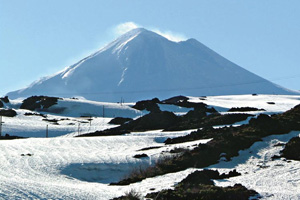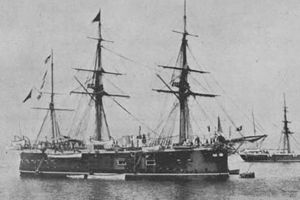In our country there are more than 2,000 volcanoes, of which 500 are active. According to experts, it is estimated that 42 could enter into an eruptive process in the immediate future, another 16 in the next nine thousand years, and another 20 in tens of thousands of years more.
Due to this reality, in 1996 the National Service of Geology and Mining (Sernageomin), with the support of the Regional Governments of the Araucania, Conaf and the Regional Direction of Architecture, created the Southern Andes Volcano Observatory (Spanish acronym OVDAS).
This observatory is found on Nielol Hill in the city of Temuco, and its main objective is to keep watch over the riskiest volcanoes that exist in the south of Chile, such as, for example, Llaima and Villarrica.
Chilean volcanoes
The distribution of volcanoes in our country is associated with the tectonic plates, as they are found on the mid-oceanic ridge.
This group represents the largest volcanic chain on the planet. Next, we will describe some of the most important volcanoes in Chile.
– Lascar Volcano: 5,460 meters above sea level, it is located in the southeast of San Pedro de Atacama (Region of Antofagasta), near the town of Toconao. It has a gigantic and spectacular crater which is 750m in diameter and 300m deep. It is considered an active volcano, as its last eruption, which occurred in 1993, left a permanent fumerole.
– Villarrica Volcano: it is found only a few kilometers from the city of Pucon, 2,847 meters above sea level. It was named Rukapillan (house of spirits) by the Mapuche. It is always active and its crater, only 200 meters in diameter, has permanent fumeroles. In addition, it is covered by an extensive glacier of 40km2, which is located in the extreme northeast together with the volcanoes Mocho, Quetrupillan, Quinquilil and Lanin.
– Llaima Volcano: with a height of 3,125 meters, it is the biggest volcano in the country’s southern zone. It is found in the Conguillio National Park and has a crater which is 350 meters in diameter. It is one of the most active volcanoes, with 50 historic eruptions on record, the last occurring in 1994.
– Lonquimay Volcano: located about 130km to the northeast of the city of Temuco, its name means “great ravine” in Mapudungun. With its last eruption, in 1988, a new emission center associated with the main volcano was formed, the Navidad crater. It was named thus because it was created on December 25th due to a fissure in the earth.
– Osorno Volcano: this is located in the Vicente Perez Rosales National Park, opposite Lake Llanquihue, almost 60 kilometers from Puerto Varas. It is 2,652 meters high and its volcanic inactivity has lasted for more than a century. There are shelters on its slopes that allow skiing in winter.
– Tolhuaca Volcano: formed by 3 craters and a central body covered by ice, this volcano is 2,806 meters above sea level. Although no volcanic activity is known, it is still considered a potentially active volcano.
– Hudson Volcano: it is located 137km south of the city of Coyhaique (Region of Aysen). It is covered with ice and reaches an altitude of 1,905 meters above sea level. Its last eruption was dated on August 8th, 1991.








 La Escuadra Nacional bloquea el puerto de El Callao
La Escuadra Nacional bloquea el puerto de El Callao